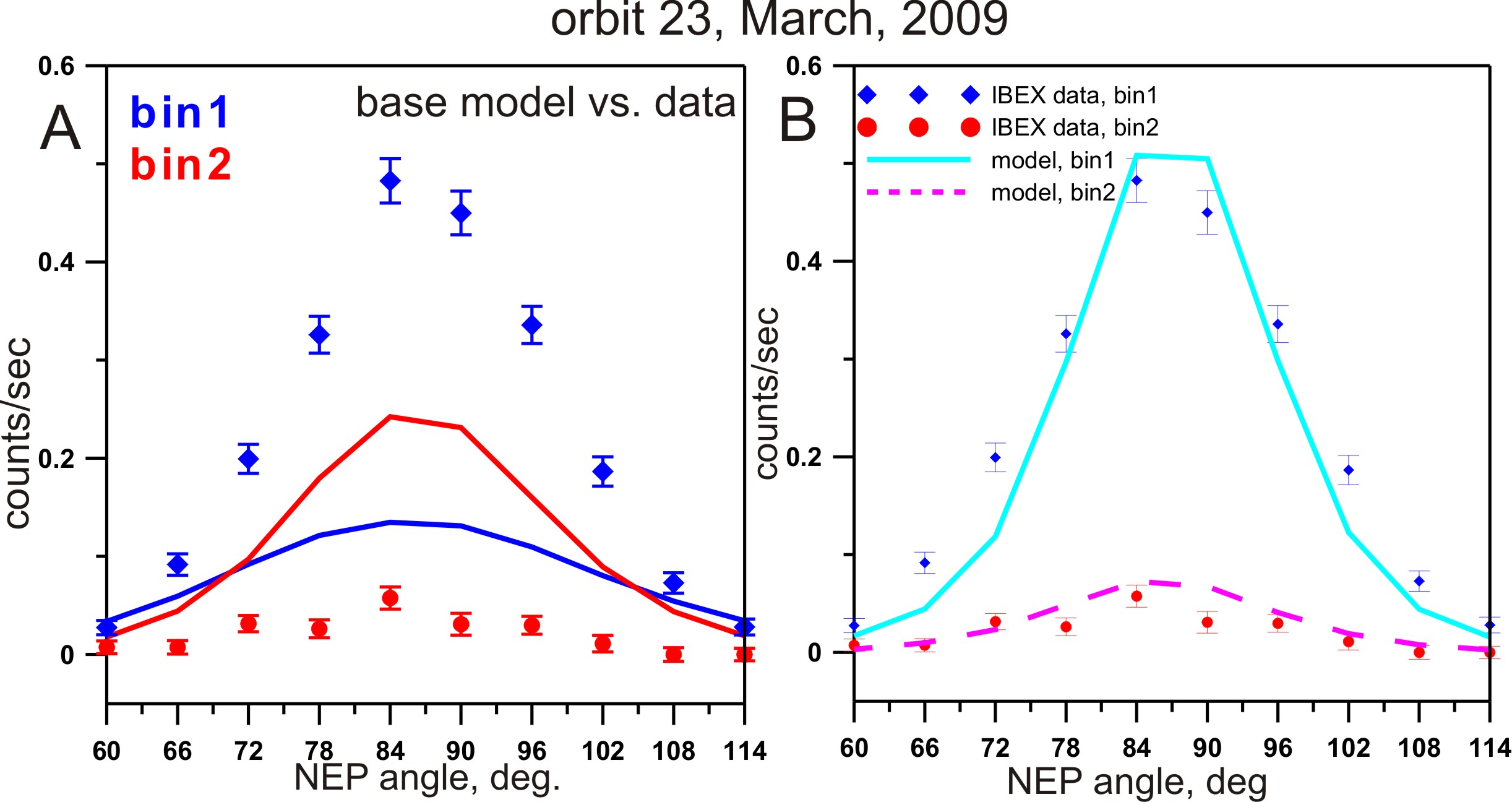
by Katushkina et al.
Abstract: In this paper, we perform numerical modeling of the interstellar hydrogen fluxes measured by IBEX-Lo during orbit 23 (spring 2009) using a state-of-the-art kinetic model of the interstellar neutral hydrogen distribution in the heliosphere. This model takes into account the temporal and heliolatitudinal variations of the solar parameters as well as non-Maxwellian kinetic properties of the hydrogen distribution due to charge exchange in the heliospheric interface.
We found that there is a qualitative difference between the IBEX-Lo data and the modeling results obtained with the three-dimensional, time-dependent model. Namely, the model predicts a larger count rate in energy bin 2 (20-41 eV) than in energy bin 1 (11-21 eV), while the data shows the opposite case.
We perform study of the model parameter effects on the IBEX-Lo fluxes and the ratio of fluxes in two energy channels. We have shown that the most important parameter, which has a major influence on the ratio of the fluxes in the two energy bins, is the solar radiation pressure. The parameter fitting procedure shows that the best agreement between the model result and the data occurs in the case when the ratio of the solar radiation pressure to the solar gravitation, μ , is 1.26+0.06 −0.076, and the total ionization rate of hydrogen at 1 AU is βE 0.35,= 3.7+0.39 −0.35 × 10−7 s−1. We have found that the value of μ0 is much larger than μ0 = 0.89, which is the value derived from the integrated solar Lyman-alpha flux data for the period of time studied. We discuss possible reasons for the differences.
